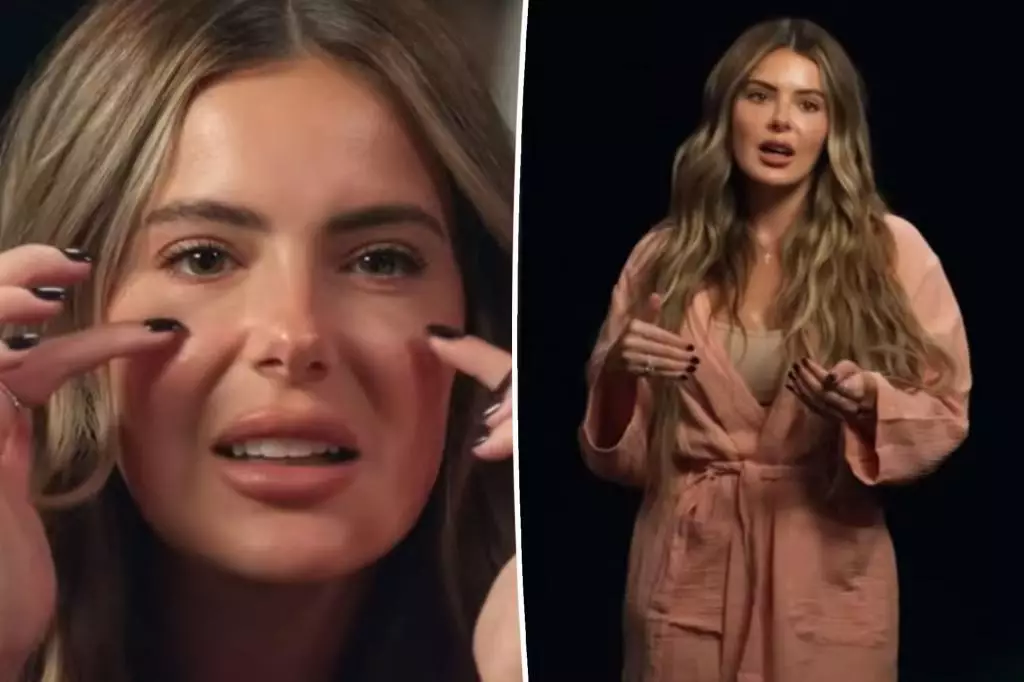In the pursuit of beauty and societal approval, many young individuals find themselves drawn to cosmetic procedures before truly understanding their long-term implications. Brielle Biermann’s candid reflection on her early decisions underscores a broader cultural trend: normalizing youthful alterations as an effortless pathway to confidence. This mindset, primarily shaped by environments where aesthetic modifications are routine, can foster an unhealthy dependence on external validation. Missing from this narrative is a critical examination of how early interventions might distort self-perception, leading to a cycle where dissatisfaction persists regardless of outward enhancements. The glamour and allure of quick fixes often overshadow the reality that such procedures, especially when performed at a tender age, can have repercussions that extend well into later years.
The Power of Influence and the Normalization of Cosmetic Procedures
Biermann’s story illustrates how familial influence and media can cultivate a culture where cosmetic procedures are seen as everyday rites of passage. Growing up alongside a celebrity mother—who frequently engaged in aesthetic treatments—she internalized an unspoken rule: to maintain youth and beauty requires constant effort and intervention. This normalization sales pitch becomes even more potent in an era where social media glorifies perfection and instant results. Young stars like Biermann often feel compelled to follow suit, not solely out of personal desire but driven by professional necessity and peer pressure. The problem arises when individuals blur the line between self-acceptance and societal expectations, risking a loss of authentic identity in the process. The obsession with perfecting minor flaws at a young age can inadvertently fuel insecurity rather than eradicate it.
The Long-Term Consequences of Early Cosmetic Interventions
While cosmetic procedures might seem like harmless upgrades, the reality is more nuanced. Biermann’s candid admission about her dissatisfaction with under-eye filler—mentioning the asymmetry and puffiness—highlights an often-overlooked consequence: unnatural appearances and additional corrective procedures. These interventions, especially when undertaken prematurely, can cause irreversible changes that complicate aging. The skin and tissues in our face are dynamic, and altering them at a young age can lead to unnatural contours, dependency on fillers, and a distorted sense of self-worth. Moreover, repeated injections can weaken natural tissue elasticity, heightening the risk of sagging and other aging-related issues down the line. The cosmetic industry’s aggressive marketing, coupled with social media’s validation-seeking culture, often blinds young users to these long-term risks, reinforcing a cycle of superficial fixes.
The Cultural and Psychological Impact
Biermann’s narrative also hints at deeper psychological effects. Her mention of filler becoming “like getting a Diet Coke”—a habitual, almost mindless routine—reveals how cosmetic procedures can become compulsive, driven by insecurity rather than genuine desire for enhancement. When beauty standards are perpetually shifting, and the bar for attractiveness continually raises, individuals are left chasing an elusive, often unattainable ideal. This constant pursuit can erode self-esteem, fostering a dependency on external modifications for self-validation. Furthermore, early exposure to cosmetic procedures may impede the development of authentic self-acceptance, encouraging a reliance on artificial alterations as a primary source of confidence. As individuals age, this reliance can become a hindrance rather than a help, making it harder to embrace natural aging and imperfections.
The Role of Society and Media in Shaping Expectations
The cosmetic industry’s sway over personal choices is undeniable, with social media serving as both a promotional tool and a catalyst for insecurities. Influencers and celebrities often showcase their transformations, inadvertently setting unrealistic standards for beauty. Instances such as Hilary Duff’s rumored juvenile cheek filler or Jennifer Garner’s cautious advice serve as cautionary tales about the allure and dangers of early interventions. Society’s obsession with perfection exacerbates the pressure on young people to conform, often at the expense of their mental health and authenticity. What remains troubling is that the narrative seldom emphasizes the importance of aging naturally and embracing one’s unique features—values that could foster healthier perceptions of beauty and self-worth if more widely promoted.
The discourse around cosmetic procedures must shift from celebrating superficial adjustments to fostering a culture that values authenticity, self-care, and psychological resilience. While enhancements can be empowering when pursued thoughtfully and at an appropriate age, rushing into treatments as a means to meet external expectations is a dangerous gamble. The true beauty lies not in static perfection but in accepting oneself through all stages of life, flaws and all.

